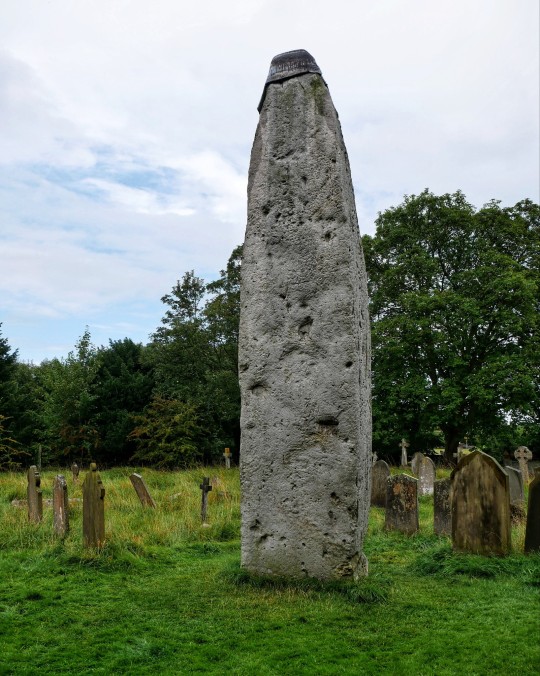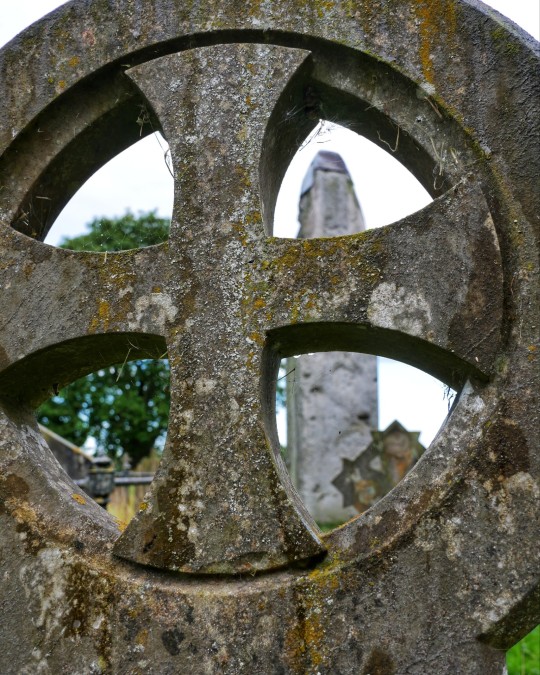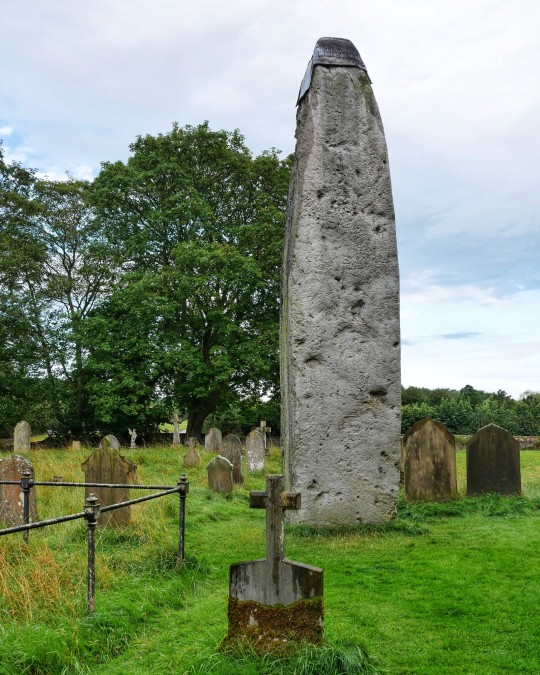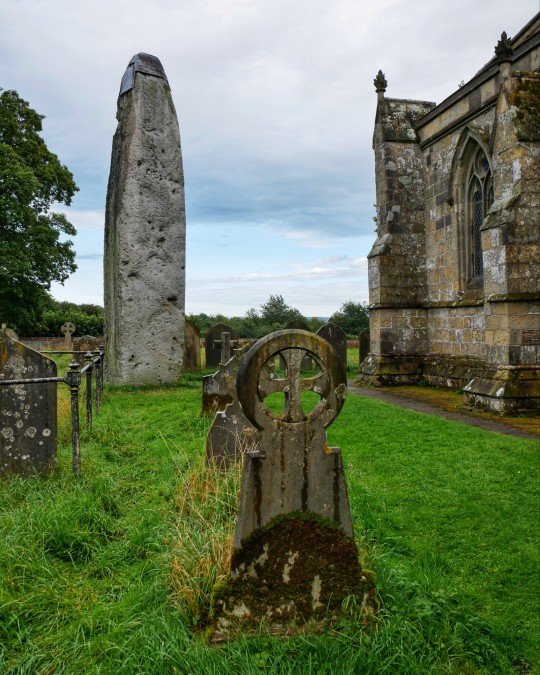#rudston monolith
Explore tagged Tumblr posts
Text
Rudston and the Ritual Landscape of the Great Wolds Valley

View On WordPress
#Chalk#Cursus#East Yorkshire#Great Barrow#Henge#ritual landscape#Rudston#Rudston Monolith#Standing Stone#The Great Wolds Valley#The Gypsey Race#winterbourne stream
0 notes
Text










The Rudston Monolith, Rudston, East Yorkshire
#ice age#stone age#bronze age#copper age#iron age#neolithic#mesolithic#calcholithic#paleolithic#prehistoric#prehistory#megalithic#megalith#monolith#monster#yorkshire#monument#ancient living#ancient cultures#archaeology#relic#stonework#churchyard
196 notes
·
View notes
Text




Visited the late neolithic / early bronze age Rudston monolith - the tallest standing stone in the UK.
The photos were taken on a camp snap and came out looking eerie as fuck
The whole area is ancient. There are bronze age barrows and cursuses - 3 of which all converge on the monolith. Also a former Roman villa nearby. The church in the photo is Norman.
Truly special place.
20 notes
·
View notes
Text

All Saints, Rudston, East Yorkshire. The Rudston Monolith, the tallest freestanding monolith in the UK is in the churchyard!
0 notes
Photo

Rudston Monolith
118 notes
·
View notes
Photo

22.10.2021_2:41 PM
38 notes
·
View notes
Text
Is this the most scared Pagan site in the UK?
The Rudston Monolith, the uk's tallest standing stone and possibly one of our most sacred sites. Located in North Yorkshire England near the seaside town of Scarbourgh. The Monolith is thought to have been erected during the Neolithic period (Stone age) which fell between 12,000 and 6,500 years ago.
Originally around 30 feet tall and with almost as much below the ground it was an impressive piece of construction for these early people. Constructed from 40 Ton's of gritstone the nearest supply is Cornelian bay over 15km (9miles) away, however given its size it is likely to have come from the Cleveland Hills which are 64km (40miles) from the site. Some believe that the stone was dragged all that distance, however it is also possible that the stone was simply deposited on site the by a retreating glacier. The stone was erected at the nexus between four large Neolithic settlements known as "Cursus", the largest of which was 2700 meters (1.7miles) in length. These massive settlements with ditches and banks kept the inhabitants safe from rival clans and wild animals. The settlements were also positioned over the Gypsy Race a rare stream that runs over the chalk bed providing clean water. It's thought that it was originally surrounded by a stone circle, a couple of these remain with one in the church yard with an interesting white face.
The exact date is unknown but as this is the largest example of Curcus's in the UK it has been dubbed the first village in England. From finds of flints and pottery we can say for sure that it was in use towards the end of the Neolithic period through the early bronze age (between about 6500 and 5300 years ago).
We can't confirm the religion here, but at the time it tended to be focused around the Shamanistic practice of healing/Ancestors and worship of the mother goddess. Given its position it is likely that the stone was a highly important site of worship for these early people.

[This is a represention of how the stone would have looked surrounded by the four Cursuses. The blue line connecting them is the "Gypsy Race" stream that bends through the site.]
Even after these people faded the stone remained and so did its fame as an important site. The Vikings who arrived in about 866 named the site "Hrodr-Steinn" which in old Norse means "The Famous Stone". When the village was later converted into old English the name was retained with "Rood Stane" which became shortened to "Rudston".

The Normans were the next to arrive in 1100AD and they started a process of "Christianising" the Monolith to put an end to any existing pagan practices. They built a church on the site and its even belived that they carved the top of the stone to form a cross. They started a rumour that the devil had thrown the stone like a javelin at the church but god diverted it so that it became imbedded in the graveyard. This obviously was aimed to reduce the stones importance and hide that it had been there twice as long as Christianity had existed.

[This is only a representation of how the stone could have looked at this time we a Norman style church. On 4ft thick section of a tower and the font still exist from this time. ]
The church was rebuilt and extended in the 13th and 14th centuries with a view to reducing the power of the stone. The extension was made so that the sun was prevented from touching the stone. The church was also restructured so that the stone was facing the devils door *
By 1773 the stone was not in a great state covered in green moss and algae with the top crumbling it was down to only 26ft. A Mrs Bosville however took pity on the stone (or was a secret pagan) and arranged for a Lead cap to added to the top to prevent the damage from getting worse. Some see it's lead hat as an eyesore or have assumed that it was added by the church as an insult to the old religions but without this protection the water ingress would have continued to destroy the stone due to the damage caused by the Normans.
This is how you will find the stone today if like me you choose to take the pilgrimage.
*Devils Door - As the north side of the church gets no sun it is known as the devils door, it's this side of the church that you will normally find the grave yard. When you leave the church to be buried you leave via this door. During christenings it is normal to leave this door slightly ajar so that the devil could escape.

For more posts like this click on this link for my Tea break masterpost
#magic#witchcraft#pagan#Rudson#Monolith#dark ages#stone age#ancient magic#magicoldcottage#Rudston Monolith#ancient sites#witchblr
19 notes
·
View notes
Photo

The Rudston Monolith in the churchyard of the Rudston Parish Church (Yorkshire, England). At 7.6 metres, it is the tallest megalith in Britain, and is from the Late Neolithic Period or Early Bronze Age.
#history#prehistory#architecture#neolithic period#bronze age#prehistoric architecture#britain#prehistoric britain#neolithic britain#bronze age britain#england#yorkshire#rudston#rudston monolith
14 notes
·
View notes
Text
North-easterly: Sidetracked and Gobsmacked
North-easterly: Sidetracked and Gobsmacked
We had chosen to take a very long route home for one simple reason… there was something we wanted to see that was never going to be on our way to anywhere. So the possible three hour journey took us over ten, and all to see a stone… a single standing stone… but a stone unlike any other in the country: the Rudston Monolith. It stands in the churchyard of All Saints, Rudston, in the East Riding of…

View On WordPress
0 notes
Photo

At almost 26' above ground the Rudston Monolith is the tallest megalith in the UK. Standing next to it feels literally awesome. It stands right next to the Rudston Parish Church of All Saints, showing a continuity of this sacred space through the millennia. The closest source for the stone is almost 10 miles north of the site, although it may have been brought to the area by glacial movement. I wonder how much of it is underground? [Image description: colour Instagram photo of a very tall and slender grey standing stone with a lead cap, towering above graves, with a Norman parish church a few yards behind it. The stone is almost as high as the church.] #ImageDescription #yorkshire #EastRidingOfYorkshire #Rudston #megalith #monolith #prehistoric #neolithic #StandingStone #church #norman #england https://www.instagram.com/p/CRv0wwxppDU/?utm_medium=tumblr
#imagedescription#yorkshire#eastridingofyorkshire#rudston#megalith#monolith#prehistoric#neolithic#standingstone#church#norman#england
5 notes
·
View notes
Text

Rudston Monolith (standing stone), Rudston Churchyard, East Riding of Yorkshire, England.
The Rudston monolith is the tallest prehistoric standing stone in Britain, standing almost 8 metres high, nearly 2 metres wide, a metre thick and weighing somewhere in the region of 26 tons.
more info here:
11 notes
·
View notes
Text

Rudston Ancient Outer Stone, Rudston, East Yorkshire
A few feet from the famous Rudston Monolith, this ancient but much smaller stone might suggest a stone row or provide a capstone for a burial.
#ice age#stone age#bronze age#copper age#iron age#neolithic#mesolithic#calcholithic#paleolithic#prehistoric#prehistory#standing stones#outliers#monolith#archaeology#relic#ritual#ancient living#ancient craft#ancient cultures#stonework
70 notes
·
View notes
Text



000. Rudston Monolith
41 notes
·
View notes
Text
This is a final mop-up of our time, so far, in Yorkshire (we’re heading back via York next week..), and it will cover a 2nd visit to Scarborough – to the North Bay area and the castle, a flying visit to Burton Agnes & the Rudston Monolith, the Muston scarecrow festival and Boggle Hole (visited on the way home from Whitby).
So let’s start with Boggle Hole (where the main picture was taken). We just saw the sign on the way home and thought it was a good name and we’d have a look! We took the lane, which turned out to be long and narrow, until we came to a small parking area – keep going, says Calv. Only we couldn’t as there was a sign up advising against it! The lane that we walked down was steep and led to a YHA hostel and the Quarterdeck café. These were nestled at the top of a rocky cove where fossil hunts are regularly held – and it was pretty busy still when we arrived. There were some steps leading up the hillside which we decided to explore – there were a lot more than we were expecting (from memory I think it was 134…) and they were the usual mix of different sizes and steepness!
It was a steep climb back to the car, but no worse than anything else we’d done that day!
As we made our way back up to the main road Calv suddenly screamed at me to stop. He’d spotted an owl just sitting on a post. Of course, by the time he’d got the camera ready the owl flew away 😦
Boggle Hole steps
Clifftop walk from Boggle Hole
Next up, Burton Agnes. We went here because we had driven past the village a couple of times and it looked really pretty, and there is also an English Heritage property here to visit (and it was raining…)
Be aware though – it is the Norman Manor House that is English Heritage not the main hall. To visit the main hall you will need to pay £10.50 each (it’s privately owned). If you opt to just visit the English Heritage part you are given about 15 mins to do so! We also visited the church.
Burton Agnes – Norman Manor House on the left
The vaulted basement of Burton Agnes Norman Manor House
The main hall of the norman manor houes
We could see signs for a monolith, the Rudston Monolith, so continued up the B road in that direction. Let me save you some time here…. It’s in the churchyard!! We spent ages driving round and round looking for it… It is the tallest prehistoric standing stone in Britain, and some say that there is a dinosaur paw imprint on it….


View from Rudston Church
As we had more of the day left than originally anticipated we decided that now would be a good time to visit Scarborough. I have already written about our 1st visit to Scarborough, but not about driving through the little village of Muston on the way.
We drove through Muston during their annual (since 1999) scarecrow festival! It was an absolute delight, with almost every household displaying a scarecrow – or so it seemed anyway. There were an awful lot of people in the village to see the scarecrows. The last two we saw before leaving the village were of Kim Yong Un and Donald Trump…
We took no pictures I’m afraid as we didn’t actually stop, but you can get more information here.
On our final day in Yorkshire we decided to re-visit Scarborough to take in the castle. We tried to park as close to the castle as possible (there is a car park in front of St Marys Church), but didn’t have any coins (I gave all my spare to a French family in Robin Hood’s Bay), and none of the machines took cards yet (including those along the Marine Drive). So we ended up driving through the North Bay area and finding some free parking alongside the pitch and putt of Peasholm Park – bonus 🙂
Our first stop was onto the beach for a quick photo of the beach huts and to watch the waves crashing in as the tide swept in. We then had a pitstop in the Peaches n’ Cream café, which is next to a crazy gold course (very nice too), before heading up to the castle itself. This was quite a walk and all of it uphill!
Beach huts at Scarborough North Bay
The waves crashing in as the tide comes in at Scarborough North Bay
On the way we passed 3 bowling greens (open to the public) hidden away in a park on the cliff, before finding the castle itself. This is another English Heritage property and was fairly busy, as the rain had stopped for a while – although it was very windy up there!
View over North Bay from Scarborough Castle
The remains of the keep at Scarborough Castle

The castle sits on the promontory that separates the South & North Bays of Scarborough and affords amazing views, particularly from the top of the keep.

View over South Bay, Scarborough from the castle
On leaving the castle we descended by a different route and walked along the seafront promenade where we found this sculpture of Freddie Gilroy. He was a soldier who was one of the first to enter Belsen Concentration Camp on it’s liberation. The statue is huge and was originally loaned to the town for 1 month, until it was bought by a local resident, meaning it could now remain there.

Our last stop was to Peasholm Park where the boating lake is situated. And what a boating lake! There are swan pedalos, rowing boats, an island reached by a bridge, a pagoda, a café and a bandstand in the middle of the lake! There was somebody playing in there as well! There’s also a pitch and putt course as previously mentioned.
Peasholm Park, Scarborough
Peasholm Park, Scarborough
We had seen signs for an historic water chute but didn’t actually manage to find it,(although we do know where it is, beside the north bay railway and we did find the remains of the workings of one of the defunct tramways 🙂 ). If we return we will definitely seek this out as one of the 1st things we do 🙂

The old workings for the North Bay Railway, Scarborough
All in all this was a wonderful last day in the area and we fell in love with Scarborough all the more as a result of our new discoveries 🙂
Discovering more delights in Scarborough – North Bay and the Castle This is a final mop-up of our time, so far, in Yorkshire (we're heading back via York next week..), and it will cover a 2nd visit to Scarborough - to the North Bay area and the castle, a flying visit to Burton Agnes & the Rudston Monolith, the Muston scarecrow festival and Boggle Hole (visited on the way home from Whitby).
#boggle hole#burton agnes#Castle#cinder track#Historic Water Chute#Motorhome#North Bay#Parking#rudston monolith#Scarborough#scarborough castle#travel#uk coast
0 notes
Text
americans aren’t allowed to discuss the rudston monolith, it’s our tallest megalith, talk about something else, i’m gatekeeping it
2 notes
·
View notes
Photo

22.10.2021_2:38 PM
40 notes
·
View notes